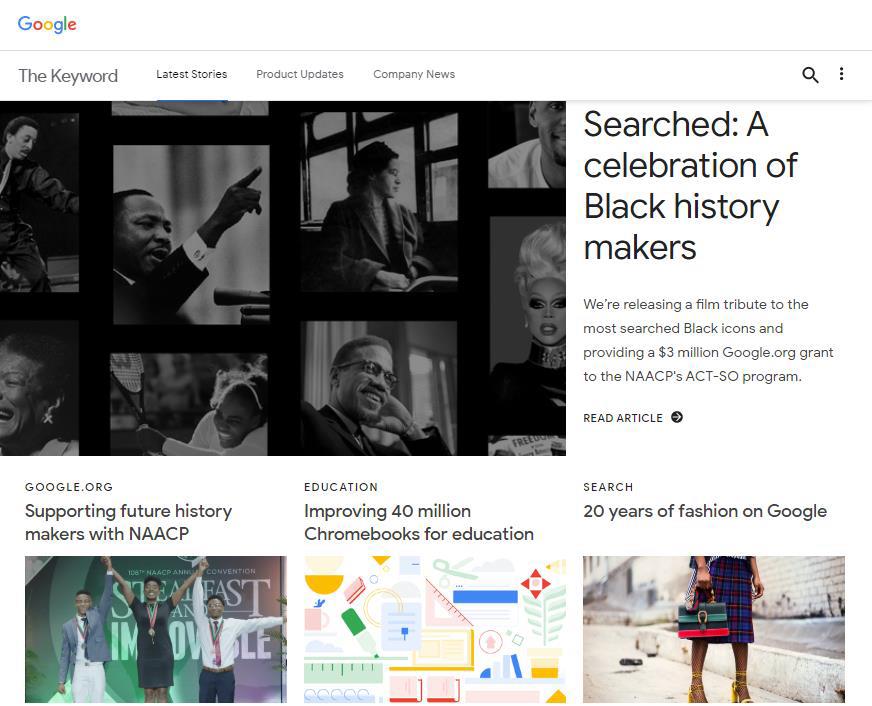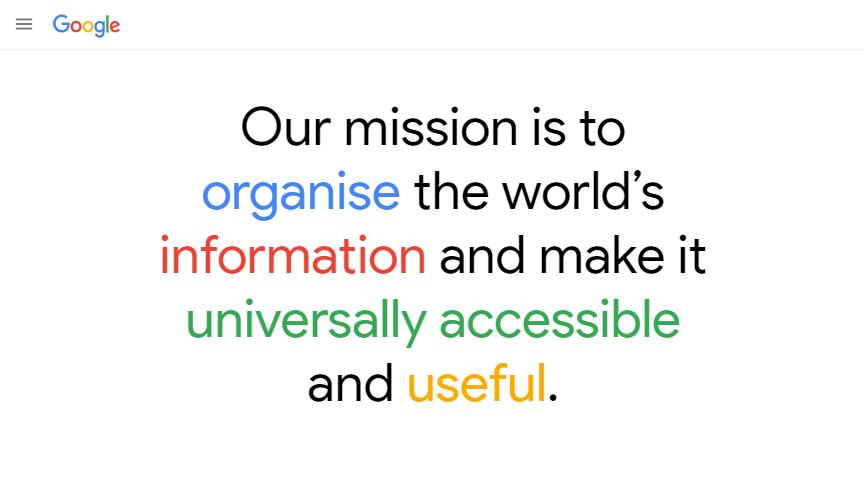
by Connie Hon
Domain Product Manager Share this post



At a recent Brands & Domains conference in Montréal, Canada, Google’s Product Strategy and Marketing Lead Christina Chiou Yeh shared how a strong early adopter (blog.google) was vital in helping her build a convincing business case to use second level domains in .google for core, brand-related websites where Google could talk about itself and its values as a company.
Since February 2019 when we started tracking the top .BRANDs ranked in the Alexa Top 1 Million,1, about.google has consistently ranked in first or second place. An amazing result for a .BRAND domain name that had been created on August 6, 2018 and whose website content had been migrated over from google.com/about in early 2019.
Two things set about.google apart from the other Alexa ranked top .BRAND domain names.
- about.google’s ranking held steady while other .BRAND domain names differed by the day.
- about.google climbed to the top spot in the Alexa Top 1M in a handful of weeks post-migration while the other .BRAND sites built up traffic and ascended the Alexa ranks over months, if not years.
Both point to a direct result of about.google being strategically backlinked from Google.com. Its placement on the world’s most popular website gave about.google high visibility and very high authority i.e. “link equity”2. In fact, over 74% of web traffic that goes to about.google comes from search.
We believe Google’s experience could inspire other .BRANDS and decided to catch up with Christina to find out more.

Our guest, Christina Chiou Yeh has over 15 years of experience with brand management, creative development, graphic design, and project management. In 2007, she joined Google as a graphic designer. These days, she is still enjoying her time at Google, where she leads product strategy and marketing for Google Registry.
Connie Hon (CH): Can you briefly describe how .google domain names are used?
Christina Chiou Yeh (CCY): .google domains are primarily being used for core, brand-related content, where Google can talk about itself and our values as a company. Our first major consumer-facing .google domain to launch (beyond industry-related domains registry.google and domains.google) was blog.google. Since then, Google has launched many more .google websites, such as diversity.google, wellbeing.google, sustainability.google that we use to share our core values to the world.
CH: How did you gain internal buy-in to support the use cases for .google domains?
CCY: Back in 2016, my job at Google was managing its corporate domains portfolio and helping marketing managers across Google and Alphabet determine what domains to use, purchase, and acquire for our products and campaigns. I had been involved with Google’s top-level domain (TLD) program since the beginning and wanted to see the company use our branded TLD, so I developed a strategy to use .google for core, brand-related websites.
It made sense to have a separate place where we’re talking about who we are as a company and our values that was distinct from our product websites.
At the time, I had a few conversations with other .BRANDs—in particular .barclays and .bmw—to understand how they were using their branded domains. We also conducted some user research to see if people would be confused by a .google URL. Results were positive—people got it—and our strategy was born.
The next step was to find a strong early adopter. Similar to how anchor tenants help set the direction of an open TLD launch, it’s also extremely important to have solid early use cases for a branded TLD.
At the time, a team at Google was working on consolidating Google’s many blogs. For a few reasons, they weren’t able to launch on google.com, so they initially approached me with a request to launch on inkfromgoogle.com. My proposal for using .google eventually made its way up the approval chain and we got the green light to launch on blog.google as the home for Google’s blog The Keyword, a core part of how we communicate with the world about our products and other efforts.
It is the perfect domain name for our company blog because it is short, descriptive, and on-brand. As soon as we launched the first major consumer-facing use case, many more websites followed.

CH: How did you overcome the notion of “loss in search equity” of the older domains?
CCY: Earlier last year, Google migrated the google.com/about website to about.google. This is the oldest domain we’ve migrated to .google, with 20 years of search equity. The team was able to perform the migration successfully and not lose any search equity in the process.
From chatting with the team, my understanding is that the engineering work required for such a migration isn’t very complicated, but it is somewhat delicate because of all the details. It is definitely possible to do a major migration without losing search equity, though it requires planning and careful execution.

About.google
CH: How has .google benefited Google?
CCY: The primary benefit Google has seen from .google is the ability to launch websites that are branded, short, and memorable. Domains like blog.google or environment.google instantly tell users what a site is all about, while also tying them to the Google brand. Using .google has allowed for better URLs that are shorter and easier to type.
.google was also the first TLD we added to the HSTS preload list, so any website that we launch on .google is secure by default.
CH: What was your biggest hurdle in the .google journey so far? How did you overcome this hurdle?
CCY: The biggest hurdle was finding the initial use case and getting that approved. It’s challenging to convince people to move away from properties that have been used for years and try something new, but I would encourage .BRAND owners to keep their eyes open for that perfect first use case. Once the first one launches, it’s much easier getting more to follow.
CH: Would you say that .google has been successful? How do you measure the success of .google so far?
CCY: Success of a .BRAND is really measured in use and I’ve been happy to see .google grow over the years. I think that a rising tide lifts all boats and hope that Google’s use of .google has inspired other brands to use their .BRAND TLDs.
1 The Alexa Top 1M: a listing of the million most popular sites on the web based mostly on traffic
2 Moz.com: Link equity was previously non-technically known as “link juice”